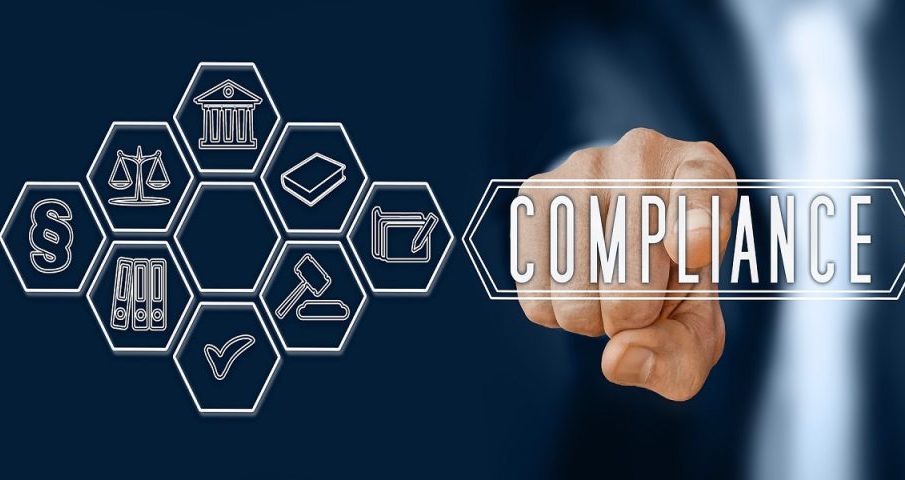The Future of GDPR Compliance That Scales

In an increasingly interconnected world where data privacy concerns are paramount, the General Data Protection Regulation (GDPR) stands as one of the most important pieces of legislation in the European Union’s history. Enforced since 2018, GDPR has reshaped how companies handle personal data, setting a global standard for data protection. However, as businesses continue to expand, diversify, and innovate, ensuring compliance with GDPR is becoming more complex. For companies to navigate this evolving landscape and meet the growing demands of data privacy, they must find scalable solutions that allow them to stay compliant without hindering growth or innovation.
The future of GDPR compliance is not only about staying within the boundaries of legal requirements but also about creating systems and processes that adapt and evolve with emerging technologies, business models, and global privacy expectations. As companies scale, they need compliance strategies that are both flexible and robust, ensuring that privacy standards are met while minimizing the impact on operations. This article explores what the future of GDPR compliance that scales looks like and what businesses must do to ensure they remain compliant without losing their competitive edge.
1. Automation and Technology-Driven Compliance Solutions
As businesses scale, manual compliance processes become increasingly impractical. Compliance teams can struggle to keep up with the volume and complexity of data they must oversee. To address this, automation will play a critical role in the future of GDPR compliance. Technology will provide businesses with the tools they need to efficiently manage vast amounts of data while ensuring privacy laws are adhered to.
Automated data mapping and processing systems are essential for large-scale GDPR compliance. These systems can identify and classify personal data across an organization, making it easier for businesses to assess risk, track consent, and identify potential areas of non-compliance. For example, artificial intelligence (AI) and machine learning (ML) can help businesses detect patterns in data usage that could violate GDPR standards. These technologies not only reduce the manual labor involved in compliance but also allow companies to scale quickly while still respecting privacy requirements.
Another area where automation will play a key role is in consent management. The GDPR requires businesses to obtain explicit consent from individuals before processing their personal data. Automated systems that manage consent workflows can streamline this process, ensuring that records of consent are up to date and accessible at all times. As companies expand and collect more data from diverse sources, automating consent tracking will be essential in maintaining compliance and minimizing risk.
2. Privacy by Design and Default
As GDPR continues to evolve, businesses will need to embrace the principle of “privacy by design and by default.” This means that privacy features should be integrated into products and services from the outset, rather than being added on later as an afterthought. For scaling businesses, this approach is essential because it ensures that privacy concerns are woven into the core of their operations, reducing the likelihood of compliance issues as they grow.
For companies developing new products or digital platforms, this means building systems that prioritize data security and user privacy from day one. For example, implementing strong encryption, anonymization techniques, and secure data storage methods will ensure that any personal data processed is done so in accordance with GDPR guidelines. Furthermore, companies should consider providing users with transparent controls over their data, such as easy-to-understand consent forms and simple mechanisms for users to withdraw consent when desired.
The concept of “privacy by default” requires that personal data is only collected when absolutely necessary and that it is processed in a way that minimizes risk to individuals’ privacy. By integrating these principles into business operations early, companies can avoid costly compliance issues down the line while building trust with their customers.
3. Data Minimization and Purpose Limitation
Data minimization—the practice of collecting only the personal data necessary for a specific purpose—is a cornerstone of GDPR. As companies scale, it can be tempting to collect more data than needed in the hopes of gaining insights or increasing operational efficiency. However, this practice is not only wasteful; it can expose companies to greater risks of non-compliance. The future of GDPR compliance will involve developing practices that limit data collection to only what is essential.
To ensure compliance at scale, businesses will need to adopt robust data governance frameworks that enforce data minimization principles. For instance, data retention policies should be clear, and businesses must be able to justify why they are collecting and retaining personal data. With the right systems in place, companies can automate the process of purging data that is no longer necessary or relevant, further minimizing risk.
Similarly, the principle of purpose limitation—ensuring that personal data is only used for the specific purposes for which it was collected—will continue to be critical as businesses grow. Scalable compliance solutions will need to track data throughout its lifecycle, ensuring that it is only accessed and processed for the purposes agreed upon by users. This practice not only mitigates the risk of data misuse but also fosters transparency and trust with customers.
4. Global Compliance with Cross-Border Data Transfers
In today’s globalized world, businesses often deal with data across multiple jurisdictions, making cross-border data transfers a common challenge. GDPR requires that personal data transferred outside the EU must meet specific conditions, including ensuring that the destination country offers an adequate level of data protection. For startups and large enterprises alike, managing these cross-border transfers can become increasingly complex as they scale internationally.
In the future, companies will need to integrate tools that facilitate cross-border compliance without sacrificing operational efficiency. This could involve using standard contractual clauses (SCCs), binding corporate rules (BCRs), or adopting Privacy Shield frameworks where appropriate. Automation will be essential in this area, as it can help businesses track and manage cross-border transfers, ensuring that each transaction meets the legal requirements.
Furthermore, the increasing emphasis on global privacy regulations, such as the California Consumer Privacy Act (CCPA) in the United States and the Personal Data Protection Act (PDPA) in other regions, means that businesses must be prepared to comply with a range of privacy laws simultaneously. Scalable compliance tools will help businesses manage multi-jurisdictional requirements by centralizing data governance and providing insights into the different regulations that apply to their operations.
5. Real-Time Monitoring and Auditing
As businesses scale, it becomes more difficult to maintain a comprehensive view of data processing activities across the organization. To mitigate compliance risks, businesses will need to implement real-time monitoring and auditing systems that provide continuous oversight of data usage. These tools can flag potential violations or anomalies in data processing and trigger corrective actions before they become significant issues.
For example, real-time monitoring systems can alert compliance teams if personal data is accessed or processed in ways that deviate from the company’s established policies. Similarly, automated auditing systems can track user consent, data access logs, and third-party data transfers, ensuring that businesses are always aware of how personal data is being handled. By investing in these systems, companies can maintain a proactive approach to GDPR compliance, reducing the risk of non-compliance penalties and reputational damage.
6. Staff Training and Awareness
As businesses grow, ensuring that employees at all levels understand their role in maintaining GDPR compliance is crucial. In the future, scaling businesses will need to prioritize data privacy education and training as a core component of their corporate culture. Regular training programs, along with accessible resources on data protection practices, will ensure that employees are equipped to handle personal data in a compliant manner.
Moreover, GDPR compliance should be embedded into every department, from marketing to IT to HR, ensuring that privacy considerations are always part of the decision-making process. By creating a company-wide awareness of privacy issues, businesses can foster a culture of accountability and responsibility, reducing the likelihood of human error that could result in non-compliance.
Conclusion
The future of GDPR compliance for scaling businesses hinges on a combination of technological innovation, efficient processes, and a commitment to privacy principles. As businesses grow, they must embrace automation, integrate privacy into their core operations, and adopt scalable systems that can adapt to emerging challenges and regulations. By doing so, businesses not only ensure compliance but also build trust with customers, foster innovation, and position themselves for long-term success in an increasingly privacy-conscious world. Ultimately, GDPR compliance is not a one-time task—it is an ongoing commitment to safeguarding personal data, and the businesses that master this will thrive in the future digital economy.








